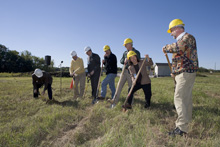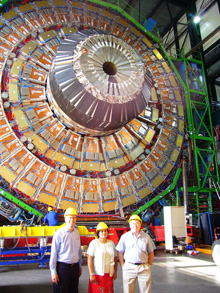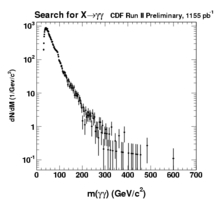 | Thursday, September 21, 2006 |
|
Thursday, September 21
Friday, September 22 Click here for a full calendar with links to additional information. |
|
Extended Forecast |
Secon Level 3 |
|
Thursday, September 21 -Minnesota Wild Rice with Chicken -Tuna Melt on Nine Grain -BBQ Ribs -Chicken Casserole -Buffalo Chicken Wrap -Assorted Slice Pizza -Toasted Pecan Chicken Salad |
|
Thursday, September 21 Dinner -Caponata -Grilled Rack of Lamb -Puree of Potatoes and Celery Root -French Green Beans -Amaretto Soufflé
Wednesday, September 27 |
| Fermilab Today is online at: http://www.fnal.gov/today/ Send comments and suggestions to today@fnal.gov Fermilab Today archive Hurricane Relief Page Fermilab Today PDF Version Fermilab Result of the Week archive Fermilab Safety Tip of the Week archive Linear Collider News archive Fermilab Today classifieds Subscribe/Unsubscribe to |
| Notes from the field: Saying goodbye to an old friend | ||
| Fermilab's Boaz Klima wrote from CERN to update us on the progress of the CMS detector for the Large Hadron Collider. | ||
| ||
|
Dear FT: We are at a CMS Week, which is a quarterly week-long collaboration meeting with hundreds of people from all over the world (literally!) discussing progress made recently and the plans for all aspects of the experiment. While at CERN, a few of us drove to SX5, the interaction point for CMS, which is about a 20-minute drive into France. The reason? The detector, which has been assembled at a ground level, is soon going to be lowered down to the collision hall about one hundred meters below ground level. The current plan calls for the two Forward Hadronic Calorimeters (HF) to be lowered at the beginning of October, and then the much larger pieces, dubbed YBx (where
A picture of three of us (Greg Landsberg, Meenakshi Narain, and I) was taken in front of one of the large pieces. Best regards from Geneva, Switzerland,
|
|
Photons shed light on higher dimensions |
||
| ||
|
Is our 3-dimensional world embedded in some higher-dimensional space?
It sounds like science fiction but it is actually a possible theory to
explain why the force of gravity is so much weaker than the other
forces (electromagnetic, weak and strong). In 1999,
theorists Lisa Randall and Raman Sundrum proposed a new scenario for an extra-dimensional universe, an offshoot of
string theory that makes predictions that can be tested at the
Tevatron. If true, we might observe the production of gravitons,
which mediate gravitational interactions, through their decay to two
high-energy photons. CDF physicists tested this theory using Tevatron collision data to look for a narrow peak in the diphoton mass distribution, which might be evidence for a graviton. Since the two daughter photons would be very energetic and isolated from other energy in the event, they would be straightforward to detect. Of course, the standard model produces events that are background to this search, including photons radiating from charged particles and quark decays that are misidentified as photons. So far the mass distribution shows only random fluctuations, with no sign of a narrow peak from a graviton. Therefore, stringent lower limits on the mass of the graviton are set. When this result is combined with CDF's e+e- search for gravitons, the limits are the world's best! | ||
 |
||
The authors: Tracey Berry (Liverpool), Sara-Madge Wynne (Liverpool) and Ray Culbertson (Fermilab).
| Result of the Week Archive
|
|
|
September 18 - 20 - One store, along with an existing store provided 43 hours and 30 minutes of luminosity. Read the Current Accelerator Update Read the Early Bird Report View the Tevatron Luminosity Charts |
|
Newsweek September 25 issue: Science and the Gender Gap A generation ago, women physicists and chemists were rare in the lab, but their number is increasing every year. But climb up to the third floor and you'll see a different display. There, among the photos of current faculty members and students, are portraits of the current chair of the department, Marjorie Shapiro, and four other women whose research covers everything from the mechanics of the universe to the smallest particles of matter. A sixth woman was hired just two weeks ago. Although they're still only about 10 percent of the physics faculty, women are clearly a presence here.
|
|
After-hours noise in Wilson Hall If you plan to work late in Wilson Hall tonight, you may hear loud noises coming from the first floor. "We will be saw cutting and air hammering for LHC@FNAL construction," said construction coordinator Tom Prosapio. "We'll start around 7:00 p.m. and go until about 4:00 a.m."
EAP Orientation |
| Security, Privacy, Legal | Use of Cookies |


